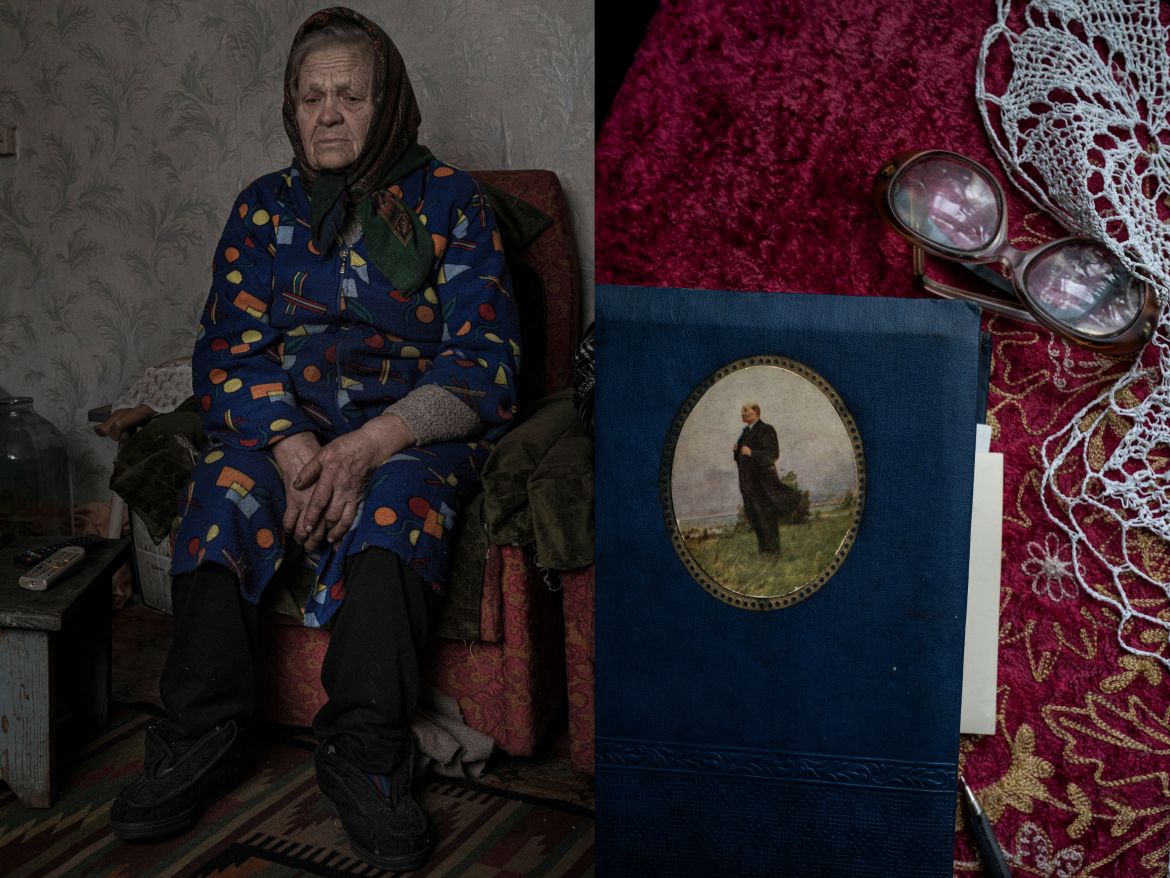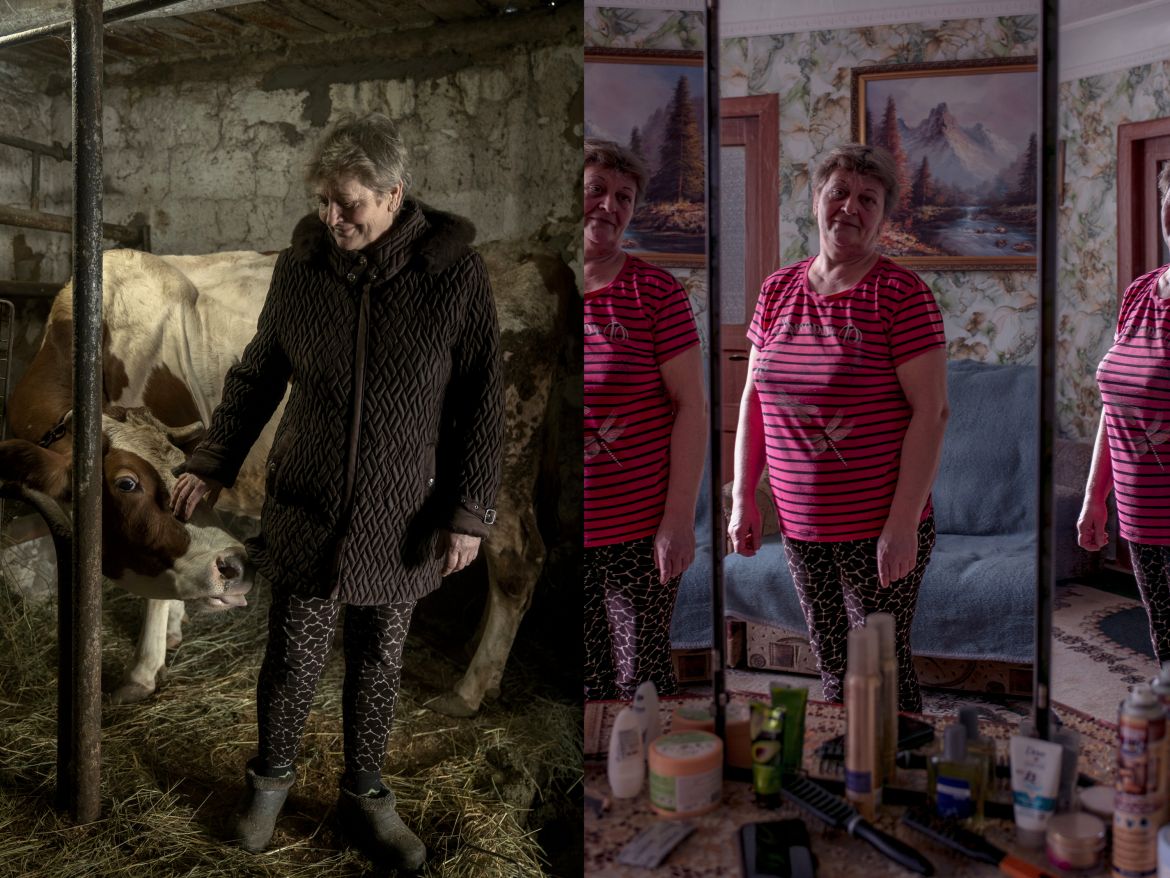In Pictures
Photos: On Ukraine’s front lines, women endure the war alone
In eastern Ukraine, 1.6 million of the 2.9 million people in need are women, the UN says.

In the midst of a war between Ukrainian forces and Russian-backed eastern separatists that has killed an estimated 14,000 people since 2014, many vulnerable or elderly women have lost their husbands to fighting and health problems and survive near the front lines alone.
“My husband died of a heart attack and my only son has disappeared. In my family, I am now the only woman left,” said Ala Nikolaevna, 73, a blind woman living in the Ukrainian town of Chasiv Yar, a few kilometres from the front line.
She cries as she recalls the last time she had hugged her son Oleg, who disappeared shortly after he had joined a paramilitary group in 2014.
Nikolaevna, who is blind due to diabetes, now lives alone in her three-bedroom flat. Her diabetes symptoms are worsening and her overall health is deteriorating as the heating does not always work in the war zone and she does not have regular access to drinking water either.
“When there is no heating, I put all my clothes on and pray. I have only one wish: that my son hugs me once again,” she says.
Alyona, 41, a social worker and volunteer, brings Nikolaevna food three times a week.
“Out of the 12 people that I work with, 10 are women,” Alyona, who did not want to disclose her last name due to the sensitive nature of her work, told Al Jazeera.
“Since the war started, all the men joined the military or looked for work in other regions of Ukraine, and there are now mostly women living on the front line alone.”
According to the United Nations Office for the Coordination of Humanitarian Affairs (OHCA) (pdf), 1.6 million of the 2.9 million people in need of humanitarian assistance in eastern Ukraine are women.
“In this region, the only job a man can do is to become a miner; therefore, many men suffer severe health consequences and die young,” Alyona added.
“The front line villages are full of single mothers and babushkas (grandmothers).”
Lizaveta Zhuk, a public information officer for OCHA Ukraine, told Al Jazeera that: “In the government-controlled areas of Ukraine, 71 percent of heads of households are female. This share is even higher for those who are more than 60 years old, and reaches 88 percent”.
Jan Egeland, secretary-general of the Norwegian Refugee Council NGO working on the front line, told Al Jazeera that the older, predominantly female population in eastern Ukraine is very different to most other wars where the NGO is active.
“You cannot have a war in a place filled to the brim with old, freezing or vulnerable people, who are struggling to survive after eight years of conflict,” he said.












